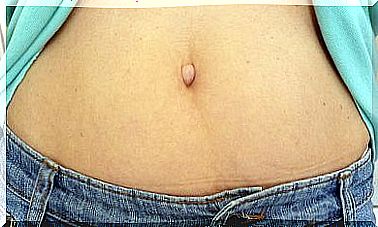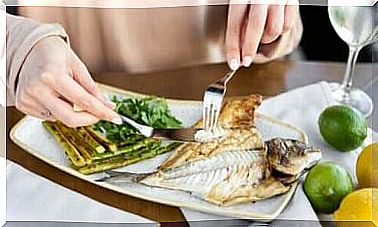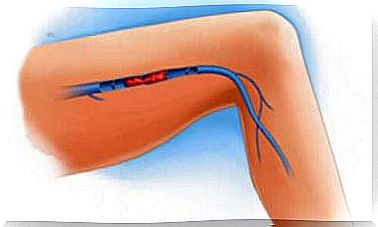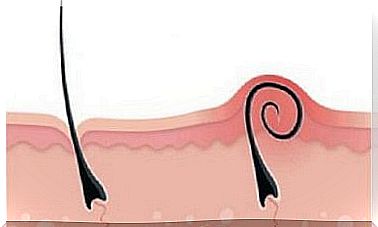How To Do An Anti-Inflammatory Diet To Treat Uric Acid
The eating pattern that an anti-inflammatory diet suggests suggests avoiding foods that contain purines to help control uric acid . Uric acid. Today we are going to explain to you in detail in this article what this type of diet involves in order to lower uric acid in your body.

The buildup of uric acid in the body can trigger a series of inflammatory changes that affect quality of life. Adopting an anti-inflammatory diet is therefore one of the best measures to avoid the effects of uric acid and to stabilize it.
Too high a level of uric acid is also called hyperuricemia.
This state also generates the breakdown of purines, which usually come from certain foods. The body metabolizes them and eliminates them through the work of the kidneys. This organ can nevertheless undergo alterations because it cannot break them down.
Urate stones can therefore form and affect the appearance of kidney stones, gout attacks and joint pain. They are also often linked to metabolic problems and high blood pressure.
How should an inflammatory diet be carried out to combat uric acid? In this type of diet, it is essential to know which foods are allowed and which are not recommended.
So, below, we’ll explain in detail what this diet is and what the guidelines are for treating uric acid.
Anti-inflammatory diet to treat uric acid: what you need to know
Current treatment for excess uric acid includes taking certain medications on a regular basis. However, the main measure to stabilize uric acid levels naturally in the blood is mainly attention to diet. Why ?
The foods that we consume in our diet can work in a positive and direct way to combat this problem. While some foods increase the concentration of purines and others on the contrary promote the metabolic process to eliminate them from the body.
Through an anti-inflammatory diet, we can get the nutrients needed to fight this disease. It is therefore advisable to avoid sources of uric acid as much as possible and to give priority to alkalizing foods.
Then find out what the goals of an anti-inflammatory diet are and how to reduce uric acid levels in the body.
Objective of an anti-inflammatory diet
An anti-inflammatory diet to treat uric acid has three main goals: to regulate the pH of the urine, control the intake of purines, and decrease the intake of fructose.
Considering all of these factors will facilitate the breakdown of uric acid. This will also reverse its effects. Find out in detail how to treat uric acid by reducing these three key factors.
Regulate urine pH
The kidneys are the organs that are responsible for filtering uric acid from the blood to promote its elimination through urine. It is therefore important to regulate the pH of the urine to promote the expulsion of this substance in the event of loss of control of the level of uric acid.
How and what are the means to lower the level of uric acid by reducing the ph of urine? You can simply reduce the ph levels in the urine by doing the following:
- Increase the intake of water and healthy infusions.
- Eat more alkalizing foods such as vegetables, potatoes, and fruits.
- Reduce the consumption of uric acid or acidifying sources such as refined products, sugars, eggs and animal products (meat, offal, fish).
- Limit salt intake and cook healthy meals at home.
- Avoid alcoholic beverages completely, including beer and wine.
In addition, there are many natural remedies that are very useful for cleaning the kidneys.
Control the consumption of purines
Intake of purines should be reduced as much as possible in all anti-inflammatory diets.
It is therefore essential to closely monitor all the food we eat, as well as the method of cooking. When you boil food with purines, most of these properties are passed on in the cooking water.
Cooking in water is therefore a good way to reduce the purine content of food. The water makes it possible to retain them. However, the cooking water should not be used to make broths or other preparations afterwards.
Consume fructose
Fructose is metabolized in the body. It turns into a type of purine called xanthine, which will eventually become uric acid.
It is therefore recommended to consume only one fruit per day. In addition, the ideal is to choose fruits that contain a fairly low fructose content, such as the following:
- Apricot
- Kiwi
- Mango
- Watermelon
- Strawberries
- Orange
- Melon
- Pineapple
Foods prohibited in an anti-inflammatory diet
Most foods that are “forbidden” in an anti-inflammatory diet should only be avoided if you have a gout attack or kidney stones. If there are only high levels of uric acid, even without consequences, you will need to limit these foods as much as possible or consume them in small amounts.
To know in detail which foods are best to avoid, we will classify them according to their amount of purines:
High amount of purines (150-800 mg per 100g)
- Sausages, pâtés, offal
- Sardine, anchovies, anchovies, mackerel
- Shrimps, langoustines, cockles, mussel
Considerable amount of purines (70-150 mg per 100g)
- Veal, beef, pork, wild boar, quail, partridge
- Lentils, beans
- Large blue fish
Average amount of purine (50-70 mg per 100g)
- Rabbit, chicken, turkey
- Chickpeas, beans, peas, soybeans
- Cauliflower, mushrooms, spinach, asparagus
Low amount of purines (0-50mg per 100g)
- Fresh fruits
- White or refined cereals
- Tubers
- Low fat milk and derivatives
- Most vegetables (except those already mentioned)
We now bring you an anti-inflammatory diet template to help lower uric acid in your body and improve your health.
Anti-inflammatory diet template to treat uric acid
There are several ways to design an anti-inflammatory diet to treat uric acid. In fact, an anti-inflammatory diet almost always has to be adapted to each individual case, as uric acid build-up poses different problems.
There are, however, several simple anti-inflammatory diet models that you can use as examples of how to best plan your menus.
So here are several great options so that you can compose your own meals if you are on an anti-inflammatory diet to lower your body’s uric acid.
Breakfast
- Whole grains without sugar with skim milk
- Cup of fresh strawberries
- Coffee and water
Lunch
- Small portion of cooked chicken breast (55 g) in an integral roll with mustard
- Mixed salad with dressing and olive oil
- Skimmed milk
To taste
- Cup of fresh cherries
- Glass of water or infusion
Having dinner
- Portion of roasted salmon (55 g)
- Roasted or steamed green beans
- Half a cup of wholemeal pasta with olive oil, salt and pepper and seasoning with lemon
- Infusion or low-fat yogurt
In summary
Following an anti-inflammatory diet can limit the production of uric acid in the body and promote its elimination in a natural way.
In addition, to reduce the level of uric acid, we must also include in our diet foods with diuretic properties to promote its elimination through the urine.
These anti-inflammatory regimens are not “cures” for the problems caused by this substance. They will still be great allies in your personal treatment to help lower uric acid levels.
The problem of uric acid arises when it is retained in excessive amounts, either because it is consumed too much, or because the body cannot properly operate the functions that eliminate it.
In this article, we would like to offer you 7 delicious fruits that, when added to a healthy diet, will help reduce excess uric acid in a short time. So check out the best fruits to help lower uric acid in your body.









